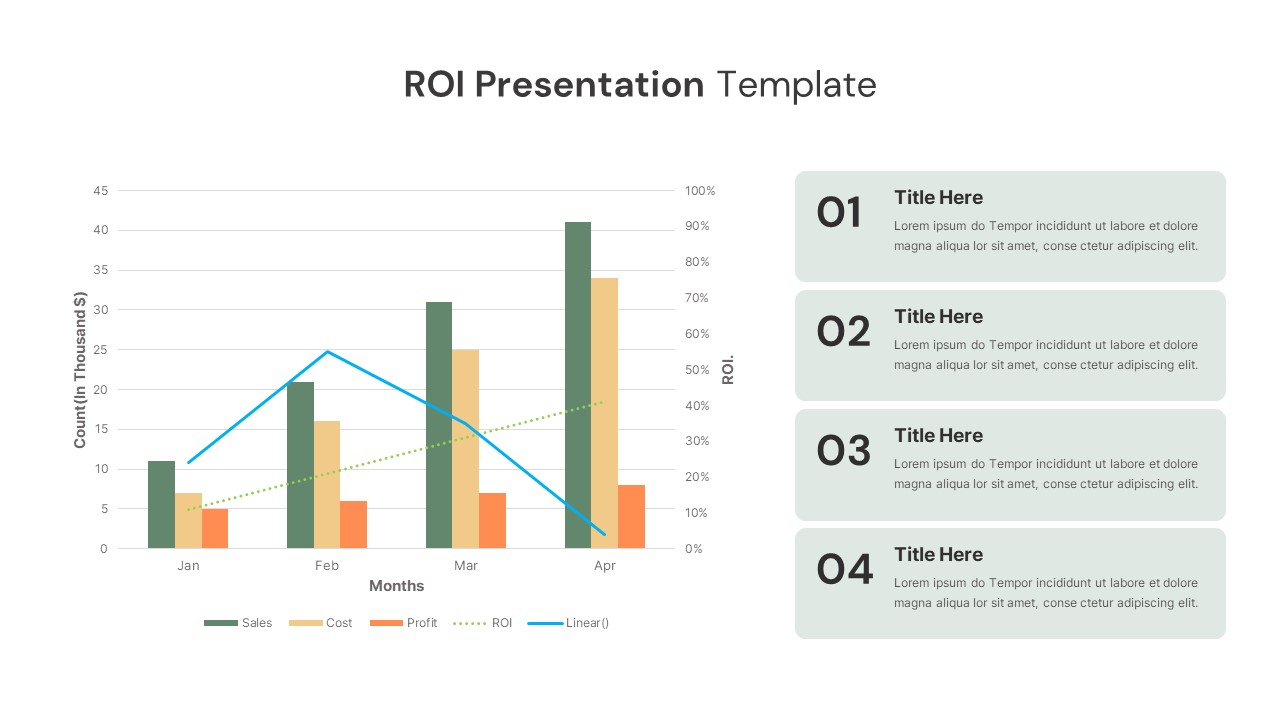Visual content is essential for capturing audience attention and driving engagement in today’s digital landscape. Effective use of visual assets can significantly enhance marketing efforts, making it critical for businesses to understand how to maximize their return on investment (ROI) from visual content purchases. This guide will explore the importance of visual content and offer strategies for evaluating your current approach to ensure you are getting the most value from your investments.
Understanding the Importance of Visual Content

Visual content is a powerful tool that can elevate your brand’s messaging, improve customer engagement, and increase conversion rates. Here are some key reasons highlighting its importance:
- Enhanced Engagement: Visuals capture attention more effectively than text alone, keeping users engaged longer.
- Improved Retention: People remember visual information more vividly, helping to reinforce brand messaging.
- Increased Sharing: High-quality visuals are more likely to be shared across social media platforms, increasing organic reach.
- Stronger Branding: Consistent use of visual elements helps establish and reinforce brand identity.
Incorporating visuals into your marketing strategy can greatly impact your brand’s success, ultimately leading to increased ROI through higher customer acquisition and retention rates.
Evaluating Your Current Visual Content Strategy

To maximize ROI from your visual content investments, it’s crucial to evaluate your existing strategy. Consider the following steps:
- Analyze Performance Metrics: Track engagement rates, click-through rates, and conversion statistics to understand what works.
- Assess Content Quality: Ensure that your visual assets are high-quality, relevant, and aligned with your brand message.
- Gather Audience Feedback: Solicit feedback to determine what visual content resonates with your target audience.
- Optimize Distribution Channels: Ensure you are using appropriate platforms for your visual content to maximize visibility and engagement.
Regular evaluation allows you to refine your strategy, invest wisely in new visual assets, and ensure that your purchases deliver the best possible ROI.
Identifying High-Quality Content from IMAGO
When diving into the world of visual content from IMAGO, it’s essential to develop a keen eye for high-quality assets. After all, the right images can make or break your marketing efforts. So, how do you identify content that stands out? Here are some tips:
- Check Resolution: Always look for images with high resolution. This ensures that the visuals maintain clarity whether used online or in print.
- Pay Attention to Composition: Good composition can draw the viewer’s attention. Look for images that have balanced elements and engaging focal points.
- Color and Lighting: Quality visuals typically have good color balance and lighting. Avoid images that appear overly edited or have unnatural hues.
- Relevance to Your Brand: Ensure the content aligns with your brand’s message and target audience. Even the most stunning images won’t serve their purpose if they’re not relevant.
- Authenticity: Choose images that reflect real-life moments or feelings. Authentic content resonates more with audiences and can lead to stronger emotional connections.
Investing time in identifying the right visuals from IMAGO will not only enhance your content’s quality but also boost your brand’s credibility. Remember, quality over quantity is the key here!
Setting Clear Objectives for Your Visual Content
Before hitting that “purchase” button on your visual content selections, it’s crucial to establish clear objectives. This will ensure your investments yield maximum returns and align with your overall marketing strategy. Here’s how to set effective objectives for your visual content:
- Define Your Goals: Are you looking to increase brand awareness, drive traffic, or improve engagement? Clearly outlining your goals will guide your content selection.
- Understand Your Audience: Know who you are targeting. What visuals do they resonate with? Tailoring your content to their preferences can significantly enhance its impact.
- Outline Key Performance Indicators (KPIs): Set measurable KPIs like click-through rates, engagement metrics, or conversion rates. This will help you assess how well your visual content performs.
- Align with Campaign Themes: Make sure your visuals tie into any ongoing campaigns or themes. Cohesive content enhances brand recognition and storytelling.
- Plan for Distribution: Consider where and how you will use the visuals. Whether on social media, website banners, or print materials, understanding the distribution channels will influence your choices.
By establishing clear objectives before sourcing visuals, you’ll be better equipped to maximize your investment with IMAGO. Always remember that strategic planning leads to more effective visual storytelling!
Integrating Visual Content into Your Marketing Strategy
Integrating visual content into your marketing strategy is crucial for capturing attention and engaging your audience. Here are some effective ways to weave visual elements into your campaigns:
- Identify Your Objectives: Before diving in, define what you want to achieve. Are you looking to enhance brand awareness, boost engagement, or drive conversions? Clear objectives will guide your content integration.
- Know Your Audience: Different audiences respond to different types of visuals. Conduct research to understand the preferences and behaviors of your target demographic. This ensures your visuals resonate with their values and interests.
- Consistency is Key: Maintain a consistent visual style across all your platforms. Whether it’s color schemes, typography, or imagery, a cohesive look will reinforce your brand identity and make your content recognizable.
- Utilize Multiple Formats: Don’t limit yourself to just one type of visual content. Consider incorporating images, infographics, videos, and animations. Each format has its strengths and can cater to different segments of your audience.
- Social Media Synergy: Leverage platforms like Instagram, Pinterest, and Facebook, where visuals thrive. Tailor your content to suit the unique features of each platform, such as stories, reels, or posts.
- Incorporate User-Generated Content: Encourage your customers to share their own visuals related to your product. This not only adds authenticity but also strengthens community engagement.
By integrating visual content seamlessly into your marketing strategy, you’ll boost engagement, improve brand recall, and enhance overall effectiveness in delivering your message. Remember, visuals are not just accessories; they play a central role in conveying your brand story!
Measuring the ROI of Visual Content Investments
Measuring the ROI of your visual content investments can feel challenging, but it’s essential for understanding their impact on your business. Here are some key metrics and methods to help you gauge that return:
| Metric | Description | How to Measure |
|---|---|---|
| Engagement Rate | How well your audience interacts with your visual content. | Track likes, shares, comments, and time spent on content. |
| Conversion Rate | The percentage of users who take a desired action after interacting with your visuals. | Use analytics tools to monitor clicks and track goal completions. |
| Traffic Sources | Where your traffic is coming from after deploying visual content. | Analyze referral traffic in web analytics to see the impact of specific visuals. |
| Brand Awareness Metrics | Measure changes in brand recognition and sentiment tied to your visuals. | Conduct surveys and track brand mentions on social media. |
Additionally, consider calculating the cost of content creation against the revenue generated from the campaigns that featured your visuals. This can provide a straightforward ratio that demonstrates the effectiveness of your investments.
Finally, don’t forget to gather qualitative feedback. Listening to your audience’s thoughts on your visual content can provide invaluable insights that go beyond numbers. In the constantly evolving digital landscape, understanding the ROI of your visual content is not just beneficial; it’s essential for sustained growth and success.
Leveraging Analytics Tools for Improvement
In the digital age, data reigns supreme, and this is especially true when it comes to visual content. Leveraging analytics tools can dramatically enhance the return on investment (ROI) of your visual content purchases from IMAGO. But how can you effectively utilize these tools? Here’s a step-by-step guide:
- Identify Your Goals: Before diving into analytics, clarify what you want to achieve. Are you looking to increase engagement, drive traffic, or boost conversions?
- Choose the Right Tools: There are several powerful analytics tools available, such as Google Analytics, HubSpot, and social media insights. Select the one that aligns best with your objectives.
- Track Key Metrics: Focus on metrics that matter. This could include click-through rates (CTR), engagement rates, or return on ad spend (ROAS). Understanding these metrics will help you refine your strategy.
- Analyze Audience Behavior: Use heat maps and demographic insights to understand how users interact with your content. Are they spending time on images? Which visuals draw their attention the most?
- Test and Optimize: Conduct A/B testing to see which visuals perform better. Make adjustments based on your findings; for instance, try different images or formats to see what resonates.
Remember, the ultimate goal is to transform insights into actionable improvements. By continuously analyzing and optimizing your visual content using these analytics tools, you can maximize your ROI and keep your audience engaged.
Case Studies of Successful IMAGO Content Use
Looking for some inspiration? Here are a couple of real-world case studies that highlight how businesses have successfully utilized IMAGO‘s visual content to boost their marketing efforts:
Case Study 1: Eco-Friendly Clothing Brand
This brand faced stiff competition in a saturated market. They decided to invest in high-quality visuals from IMAGO to tell their sustainability story. By using stunning imagery that showcased their products in natural settings, they managed to:
- Increase their social media engagement by 50% within three months.
- Boost website conversion rates by 30% after integrating these visuals into their product pages.
- Establish a visually cohesive brand identity that resonated deeply with eco-conscious consumers.
Case Study 2: Tech Start-Up
A tech start-up utilized IMAGO‘s infographic resources to create engaging content for their blog. Here’s how it helped them:
- Increased blog traffic by 70% in six months, thanks to shareable and visually appealing infographics.
- Improved time spent on page, indicating that visitors found the content valuable and engaging.
- Generated more leads through visual call-to-action (CTA) placements in their infographics.
These case studies highlight the transformative power of quality visuals from IMAGO. By strategically incorporating these elements into their marketing strategies, both brands saw significant improvements in key performance indicators, ultimately driving greater ROI.
Tips for Long-Term Success with Visual Content
To ensure your investment in visual content from IMAGO pays off in the long run, consider the following tips that can help you maximize your ROI:
- Establish a Content Calendar: Planning ahead is crucial. Create a content calendar that outlines when and where you will use your visual assets. This will help maintain consistency in your brand messaging and keep your audience engaged.
- Analyze Your Performance: Regularly track the performance of your visual content. Use analytics tools to measure engagement, conversions, and overall reach. This data will guide you in refining your strategy over time.
- Repurpose Content: Don’t let great visuals go to waste! Repurpose your assets for different channels. For example, transform a blog graphic into a social media post or an infographic into an email newsletter. This can maximize exposure without the need for additional investments.
- Maintain Brand Consistency: Ensure all visual content aligns with your brand’s identity, including colors, fonts, and messaging. Consistency strengthens brand recognition and builds trust with your audience.
- Stay Updated on Trends: The digital landscape is constantly evolving. Keep an eye on emerging visual trends and technologies. Incorporating the latest styles can keep your content fresh and appealing.
- Engage with Your Audience: Encourage feedback and interaction with your visual content. Use polls, questions, or calls-to-action to foster engagement. An active audience is more likely to share your content, further extending its reach.
Implementing these strategies can help ensure that your visual content continues to resonate with audiences, providing long-lasting value and increased returns on your investment.
Conclusion and Key Takeaways
In conclusion, visual content is a powerful tool in today’s marketing landscape, and by leveraging resources from IMAGO effectively, you can maximize your ROI. Here are the key takeaways from this blog:
- Invest in Quality: High-quality visuals are worth the investment. They create a lasting impression and speak volumes about your brand’s professionalism.
- Know Your Audience: Understanding your target demographic is essential for crafting content that resonates. Tailor your visuals to meet their needs and preferences.
- Use Data to Drive Decisions: Regularly analyze the performance of your visual content. Data-driven decisions can significantly enhance your strategies and outcomes.
- Focus on Versatility: Purchase visuals that can be adapted for multiple marketing channels to increase the utility of each asset.
- Keep Learning: Visual content trends change rapidly—stay informed and be adaptable to maintain relevance and engagement.
By applying these principles and maintaining a forward-thinking approach, you can build a robust visual content strategy that not only boosts brand visibility but also drives significant ROI for your organization. Remember, the sky’s the limit with effective visual communication!


